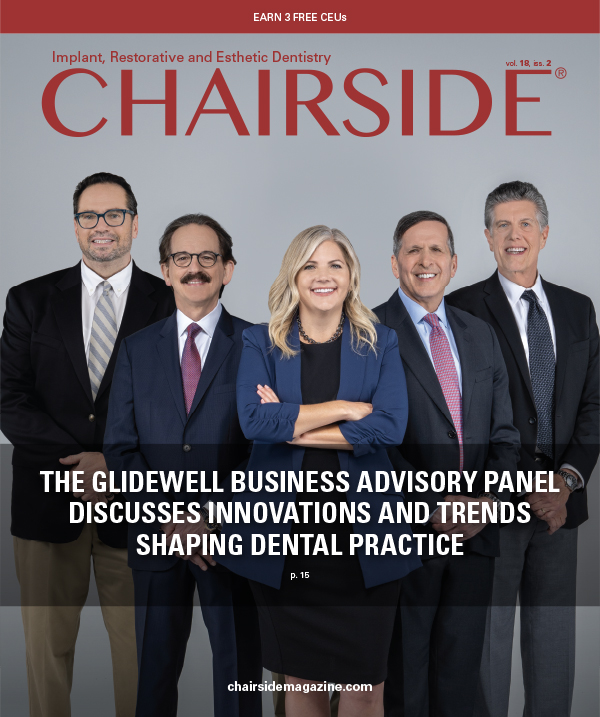Making a Crown Beneath an Existing Partial

For patients with partial dentures, the abutment teeth — supporting the clasps and rests — play a crucial role. But what happens when the patient has a serviceable partial denture and suffers a fracture or extensive decay in an abutment tooth? In this article, I will guide you through a digital technique — that does not require the patient to be without their existing partial denture — for fabricating a crown for a clasped tooth of an existing partial denture. In this case, the patient happened to be my grandmother.
The patient presented with a full-metal crown on tooth #31 that needed to be replaced. The crown was also supporting an existing partial denture. The patient wanted a more functional, tooth-colored restoration, so I selected BruxZir® Zirconia. The patient’s partial had a traditional metal framework and clasp design with an acrylic base and denture teeth. For a new crown to fit properly under an existing partial, the crown must conform to the specific parameters of the appliance, including its clasps, rests and axial contours.
When I initially assessed the patient’s dentition with the partial in place, I paid special attention to the fit of the existing partial. I also examined the occluding tooth contact and position of the tongue. I then recorded how the retentive and reciprocal arms were placed and how the partial rested on the occlusal surface of the crown.
After analyzing the patient with the partial in place, I removed the appliance and noted the spacing and the gingival region surrounding the restoration.
THE SCANNING PROCESS
- Preoperative scan: Take an initial preoperative scan without the partial in place to capture the contours and occlusal anatomy of the patient’s current abutment tooth.
- In order for the patient to continue wearing the partial while the crown is being fabricated, take a physical impression of the preoperative tooth to make a provisional.
- Prepare the tooth.
- Retract soft tissue that could obscure the margin and prevent a complete and accurate scan.
- Scan the tooth preparation without the partial in place.
- Bite scan: Take a scan in bite position for an accurate bite registration with the partial in place.
- Send all the scan files to your laboratory along with the appropriate prescription.
- Seat the provisional, and adjust it so the partial denture fits comfortably.
The laboratory supplied the final crown, a 3D-printed model and a removable pattern of the partial. While not all laboratories provide a duplicate of the partial, Glidewell produces the pattern as part of their internal quality control in order to check the path of insertion, confirm proper seating and verify engagement with the crown.
The patient loved the fit of tooth #31 and reported no discomfort with the appliance. The strength and natural translucency of the BruxZir crown resulted in a functional, tooth-colored restoration built to withstand some of the toughest challenges of the oral environment.
For doctors using in-office milling systems like the glidewell.io In-Office Solution, the process is equally straightforward. Simply use the preoperative scan as the crown design, so you can mill a crown identical in shape to the existing tooth.
CONCLUSION
Before the advent of digital technology, duplicating a crown under an existing partial was often a frustrating clinical challenge. This article presents a simplified, efficient process, whether the case is being fabricated by the lab, or in the office.
All third-party trademarks are property of their respective owners.















